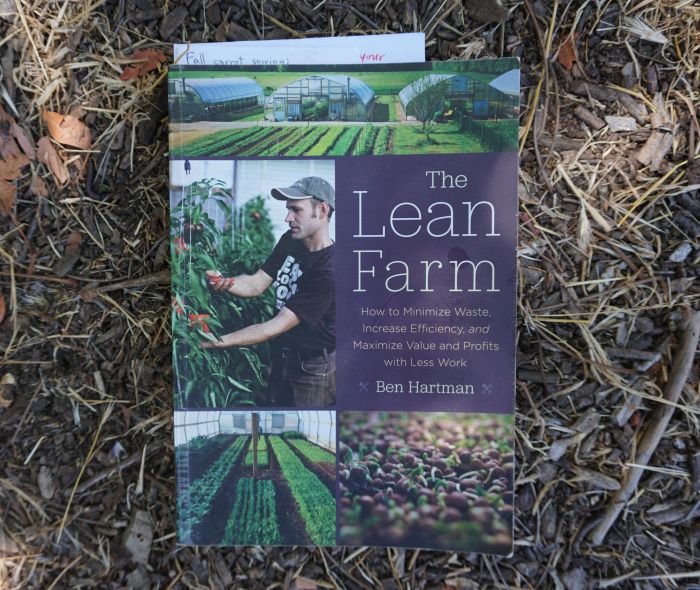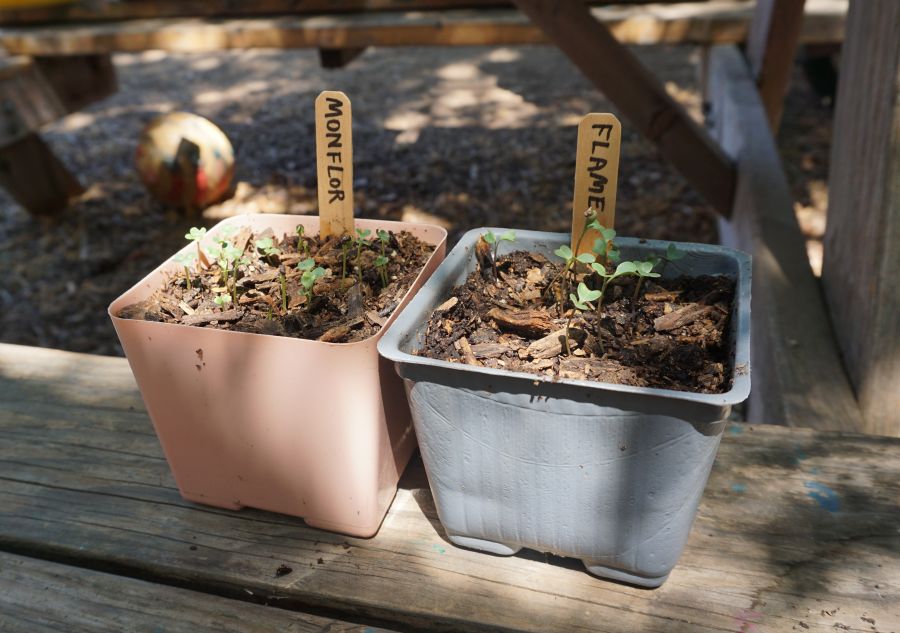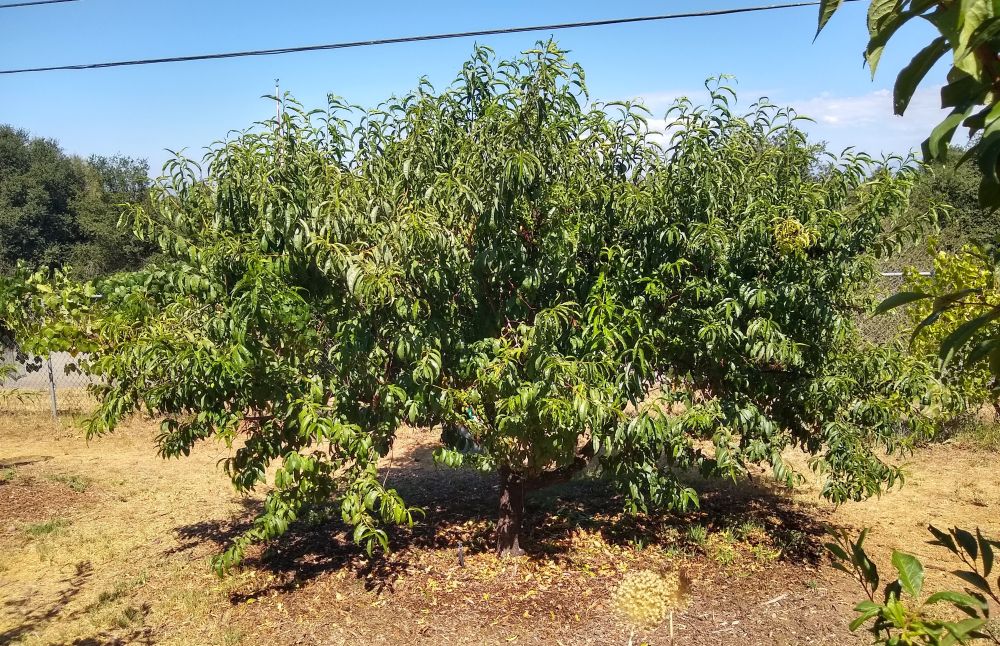Work will expand into the allotted time, goes the saying, and garden work is no exception.
If I have all afternoon to prune my nectarine tree, then I will fiddle and get artsy and take all afternoon to prune my one nectarine tree.
But I have other fruit trees that need pruning, not to mention an irrigation repair job, the wheat seeds that need to be sown, the compost that needs to be spread in preparation for planting broccoli, and on and on. I want to get a lot of food coming out of my garden, but I only have so much time.
The balancing act that I try to perform is keeping food gardening fun while also efficient.
Five practices that I often, though admittedly not always, follow in order to get more garden from less time are:
1. Work during the most comfortable time of day
In the summer, I get more done in the early morning or late evening, and I enjoy the time in the yard more. This is because the heat of midday is enervating. Even past dark is sometimes ideal in summer.
(See my post, “Night gardening.”)
Conversely, in the winter, working in the middle hours of the day is when the temperature is usually most comfortable and when I can be most efficient.
Although the rest of life precludes you from only working in the garden when the temperature is perfect, at least you can try to schedule things accordingly.
2. Maximum 20 percent experimentation
I am naturally inclined to experiment. I love to try new varieties of tomatoes, new irrigation schedules, new mixes for containers, new sowing dates, new grafting methods, new styles of pruning, new methods of pest control. However, I must acknowledge that the new takes more time than the tried and true.
In his book, The Lean Farm, Ben Hartman writes:

“In order not to get bogged down by experiments, I suggest a 15 percent rule after the second or third year of your farm: 15 percent of your time should be reserved for innovating systems to try out new ideas that are exciting to you (creativity), while the rest of your time should be focused on production systems that are known variables (discipline). Anything less than 15 percent and a farmer is prone to boredom or burnout through repetition, and your farm will miss out on new ideas for improvement. Any more than 15 percent and your farm could struggle because your time is gobbled up by your experiments.”
I go with closer to a 20 percent rule because I don’t have the same constraints as a farmer.
3. Avoid handwatering
If time were unlimited, I would water every citrus tree and every cucumber plant by hand because it is so satisfying. When I do have some extra time, I enjoy using a watering can or turning on the hose and sprinkling plants, but that is an indulgence. Far more efficient is to set up sprinklers or drip emitters and then irrigate ten or a hundred plants at once.
Automated irrigation still requires intermittent attention, and it costs a few bucks, but it has allowed me to grow so much more than I could when I handwatered everything. About twenty years ago, I did grow my vegetable garden by handwatering but I had more leisure time then.
The one area in which I’ve not been able to avoid handwatering is with plants in containers, as I often have vegetable seedlings and fruit trees of various sizes that need different water amounts and schedules.
(See my posts, “The easiest automatic irrigation” and “Drip irrigation bucket” and “Installing drip irrigation for a vegetable garden” and “Drip irrigation vs. micro-sprinklers for fruit trees”)
4. Batch sowing and planting
It doesn’t take much more time to gather ten labels and seedling trays compared to one, or three buckets of compost compared to one, or five seed packets compared to one, or to water ten trays of seedlings compared to one.
Because of this, I try to concentrate my vegetable sowings (and seedling plantings) into two or three bigger events per year rather than a dozen smaller ones.

This reminds me of why I prefer to have a dozen chickens rather than two. It’s practically the same amount of work either way. It takes just as long to collect two eggs as it does to collect a dozen.
5. Watch the time
I try to keep in mind that work will expand into its allotted time so I often set a countdown timer on my watch in order to prevent pruning my nectarine tree from taking half a day. I say to myself, I think I can get the pruning done in 20 minutes. And then I set the timer. Otherwise, I’ll be staring at buds and reflecting on the past year’s crop and doing my seventeenth circle around the tree at sunset. But maybe that’s just me.
What do you do to keep up the enjoyment and productivity in the yard while also reducing the waste of precious gardening time?
Thank you for your support of my Yard Posts so I can keep them coming and without ads.
My Yard Posts are categorized and listed HERE.




I have 100% of my vegetables/strawberries/blueberries/blk berries in either 15 gal pots or in 5-10 gallon grow bags, all are on drip. I dont have the square footage of plantable soil for the garden plants. Also, I learned the hard way that if I plant tomatoes in the soil, the soil the next few years contributes to poor conditions leading to viruses or poor tomato growth. So, I use Gary’s Acid Mix for most of my plants (not all). I then rotate the mix or allow it to sit for a year before re-using it.
My 3 avocado’s are also on drip…… my wife harvests , I am just the keeper of the plants…..
One more question, not related but it’s an Avocado question……
Ive got a Sir Prize Avocado, which has typically been a poor producer and Ive grafted Reed and Pinkerton to it , they have taken the graft well.
I have a 2nd year Pinkerton graft which is now holding 5 healthy looking and getting heavier with time avocados on that grafted branch. I am supporting the branch, BUT, I am concerned that the heavy avocados will be more than the branch can support. Those 5 Avocados are on one cluster.
Should I physically support the 5 avocados with a foam or wood rest so they literally sit on the support? Or do I let them dangle as they get heavier….
Any guidance is appreciated.
Thanks much
Hi Leo,
I’m going to suggest a third option. Remove at least three of those Pinkerton avocados. If you don’t, the branch will likely die back next year; at the very least, it won’t grow much this year and won’t fruit next year. (This is my guess, assuming the branch isn’t extremely vigorous and large for a second year graft.)
I once had two grafts of Pinkerton on a mature tree that set fruit in their second year. I let them carry three or four avocados each. The year after harvest, one was stunted and the other died back completely. Nowadays, on that same mature tree I have many grafts of many varieties but I only allow them to carry very few fruit in their first couple years and I haven’t encountered the same stunting and die back problems.
Pinkerton has flexible wood, and I doubt you’ll have a branch-breaking issue. I can’t recall ever seeing a Pinkerton with a broken branch no matter how loaded the tree.
Hmmm…I’m spending 20% time in my garden this year vs 80% time last year because I have a PUPPY! I’m kind of sad about it though we’re still getting more than we can eat through and distribute but not my finest season. But my puppy is getting a lot of training and attention!
There must be lesson here, Mariangela! How are you still getting so much from the garden despite spending far less time?
I started my summer stuff indoors before picking up my puppy, minimally potted up (tomatoes are very leggy!) and had time to plant out while he was a baby sleeping a bit more but it was scattered process and not strategic. Plants that need space are crowded. I didn’t write a garden plan! Some things have succeeded because they could without my constant attention!
*the 20% rule reminds me of what Google promised its engineers in early days – work on personal projects 20% of your time. Not sure that’s a promise kept now!
I just moved back to northern New England from northern California after 5.5 gardening seasons and my entire gardens were overtaken by perennial invasives and trees – so I had it bushhogged and now I have no garden! But I bought 60 bales of hay to start fresh with no dig methods. Keep working those plants and enjoy whatever time we have with these wonderful gifts of nature!